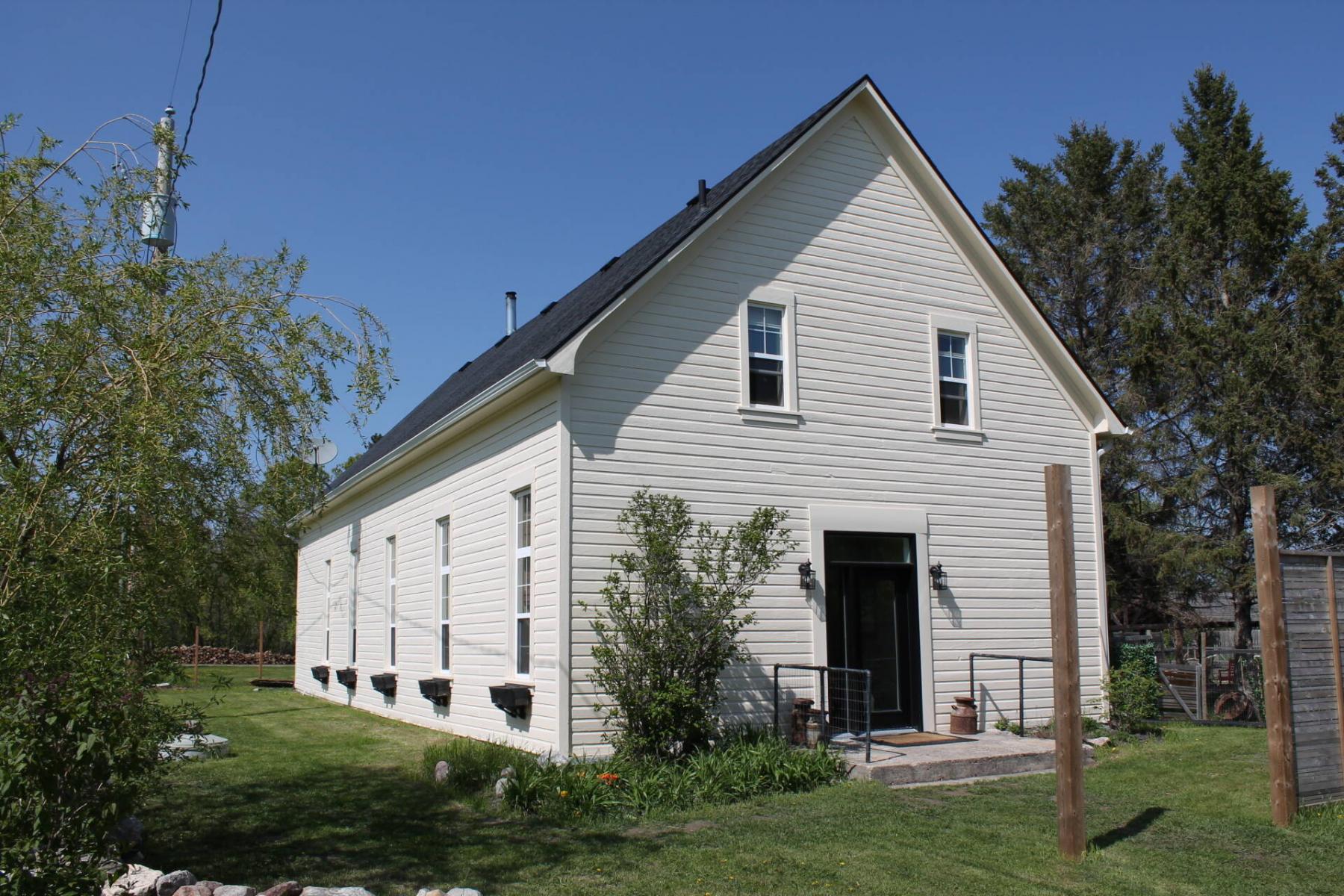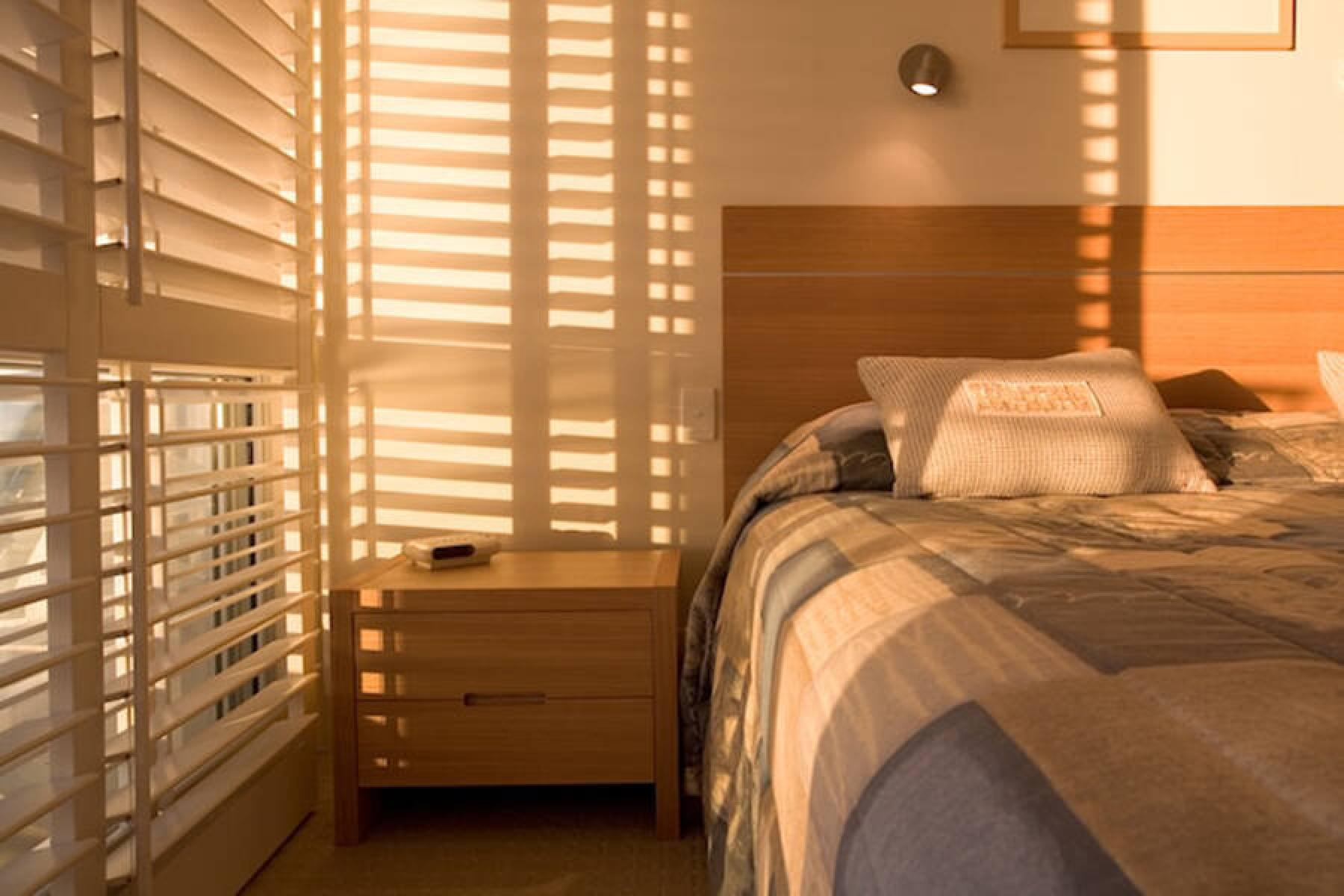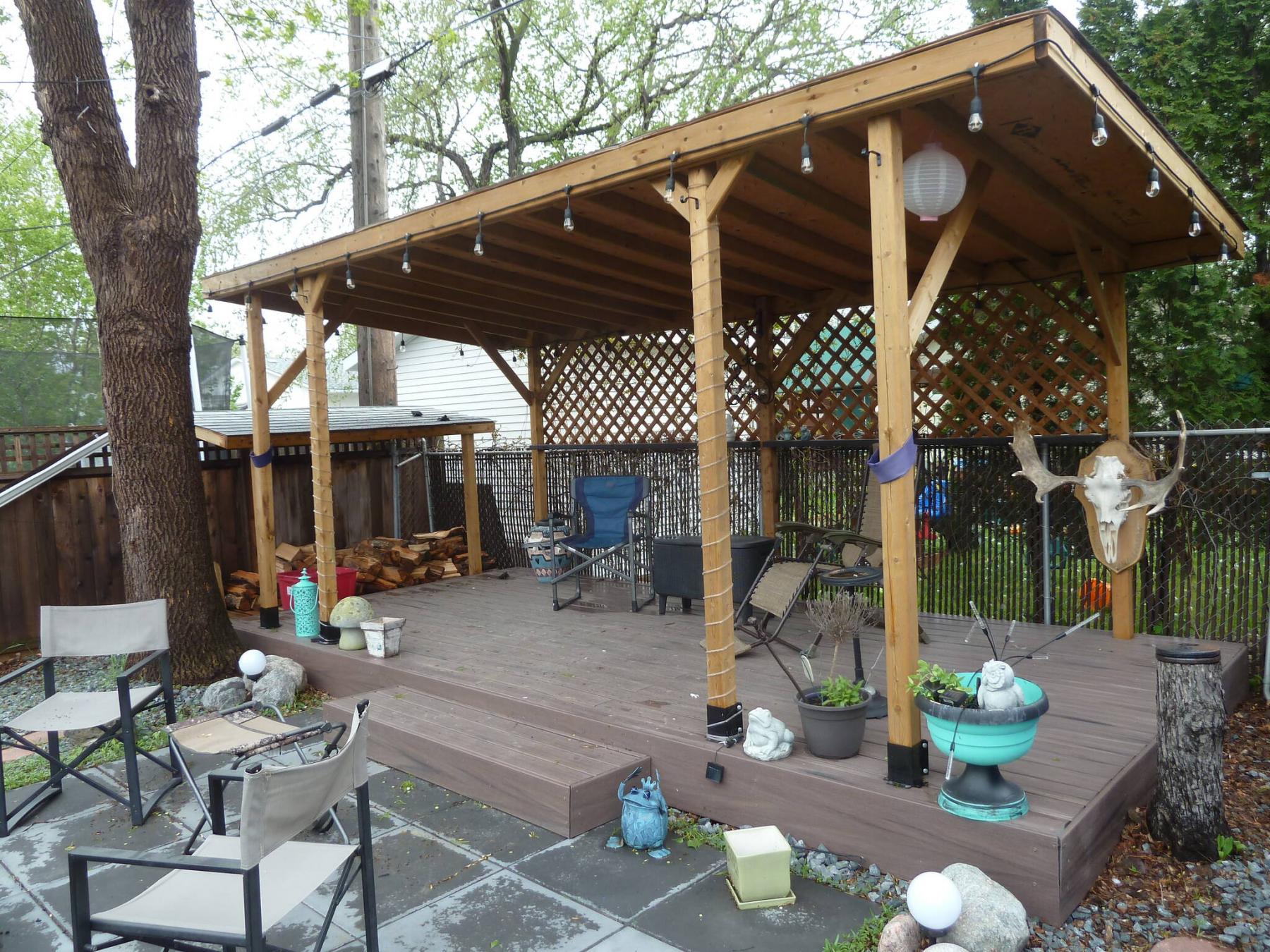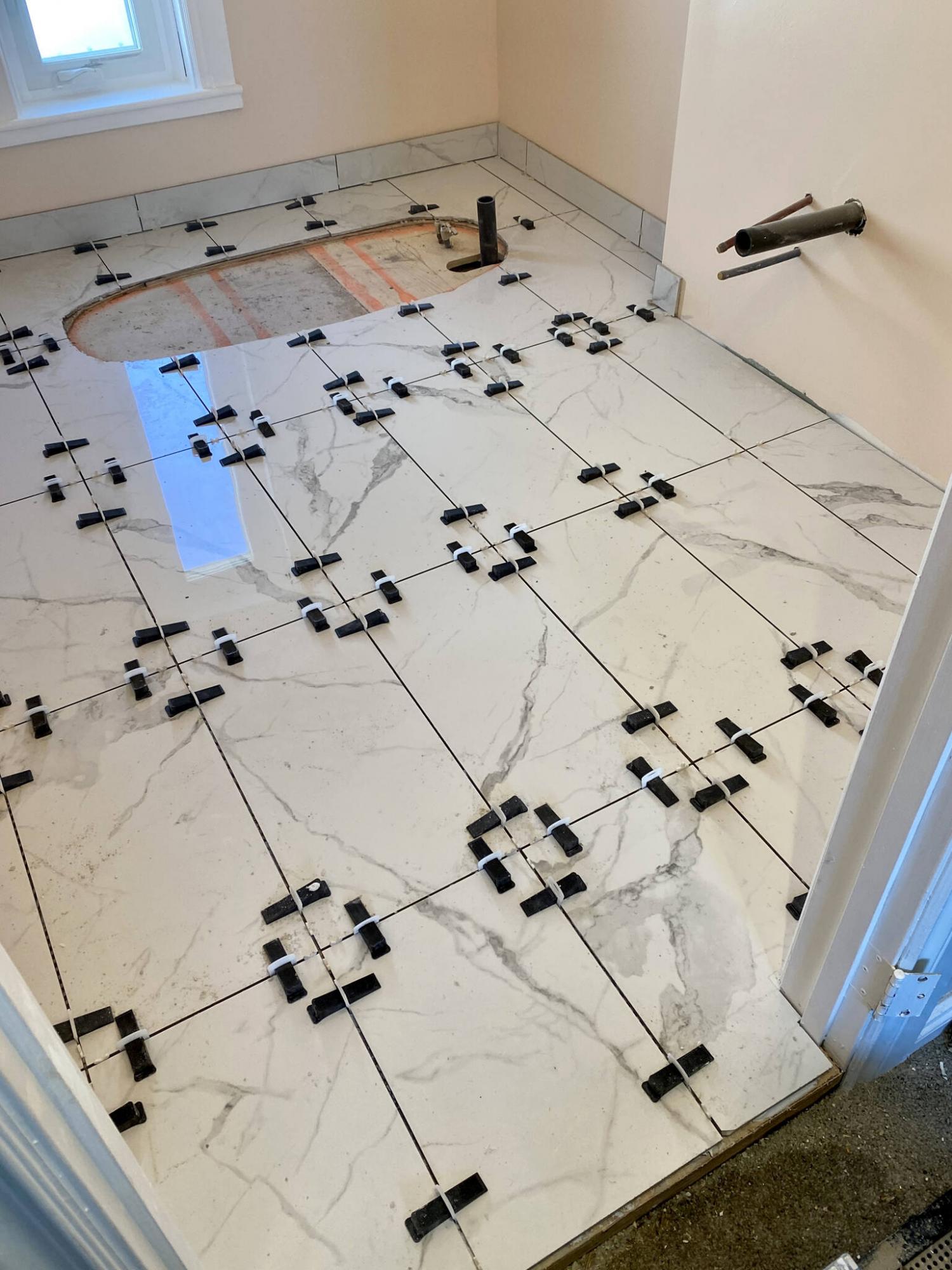Renovation & Design
Renovation & Design
Sump pump in crawlspace always a good idea
Question: Should I install a sump pump in my crawlspace for a house I’m building in Gimli? I’m concerned about the possibility of an issue with the sump pump while I’m away from the house for a long period of time. I hope you have a good day.
Karen G.
Answer: You should absolutely install a sump pump in the crawlspace, whether you are planning on installing a weeping tile system, or not. Concern about an issue while you are not occupying the house can easily be solved, with a little extra work and expense.
Almost any home with a crawlspace, rather than a typical concrete foundation and basement, has the likelihood of moisture intrusion. That is because the open floor of the crawlspace may be near or below grade. Even with a proper concrete footing and grade beam foundation and/or concrete piers, the soil inside the crawlspace may be at risk of absorbing significant amounts of moisture from around the home. The current spring weather is an excellent example, where many yards have large puddles or standing water at the present time. That is due to the abnormally high amount of rain we have experienced in the last month and the large amount of runoff from the heavier than average snow cover. That has caused a situation where the soil may be completely saturated, and possibly still frozen deep down. Those environmental factors have prevented normal moisture absorption by the soil and undoubtedly contributed to a large number of wet basements and crawlspaces.
The concern with prolonged moisture in the crawlspace is the effects on the floor structure and the possibility of mould growth. If a crawlspace gets wet due to seepage from the soil surrounding the house, and does not quickly dry out, the high humidity can cause fungi to grow. These can range from various moulds in the air and soil, but can also include wood rot. If the wooden floor joists and beams start to develop surface rot, and remain in a damp environment, major structural damage can occur. If the rot becomes extensive enough, main beams and joists may have to be removed and replaced. That will be a huge inconvenience and expense that no new homeowner wants to deal with. It may take several years, or even decades, for that to develop in a damp crawlspace but installing a proper drainage system, and proper ventilation, can totally prevent that from occurring.
To do the best job possible, your sump pit and pump should be installed with complete perimeter weeping tile outside the foundation. Those perforated plastic pipes will absorb a large amount of moisture from the exterior soil and channel it to the sump, through similar solid-walled extensions in the crawlspace. To work effectively, the sump should be a fair bit lower than the grade outside and the corrugated pipes inside the crawlspace sloped downward toward the sump. In that way, excess moisture immediately adjacent to the foundation will be collected, passively channeled to the sump, and then pumped back outside. This reliable water management system should have good success in maintaining fairly dry soil in the crawlspace. Summer vents, and/or a mechanical ventilation system, should be the final pieces of the dry crawlspace puzzle.
Some consideration should be given to the location of your new home and the soil conditions, before deciding on which way to proceed. That area will normally have some clay-based topsoil near the surface of the ground, but may be quite sandy underneath. The closer to the lake you go, the more likely you will have a higher sand content to the soil. Sand is much better to build on than clay, and will also drain quicker when wet. For that reason, a geotechnical engineer, or experienced builder, should do some soil analysis before deciding on the installation of a weeping tile and sump system.
As far as your concern with pump failure in your absence, there are two main methods of preventing a sump pump failure when you are away from the home. Both can be used together, or either one alone, depending on your preference. The first method is to install a secondary, battery operated pump, inside the sump, in addition to the standard electric model. This will require a connection to a nearby large marine or car battery, which remains constantly charged by an electric slow charger. That way, even if there is a power failure while you are not in the home, the battery pump will run for a significant amount of time to prevent overfilling of the pit.
The second method for flood protection is to install a high-water sensor near the top of the sump. This simple device will send a signal when it becomes wet, which will occur only if the sump pit is overfilled. That can only occur if there is a failure in the pump(s) and an instant notification can be sent to an alarm provider, or to you through a smart home device. That will only work if you have a monitored alarm system installed, or a more modern internet connected device. Either way, someone will be alerted to the failure and a plumber or other contractor can immediately be contacted for a repair before the crawlspace floods.
Installing a sump pit and pump, especially paired with a complete weeping tile system, will be an excellent choice to prevent excessive moisture and damage in the crawlspace of your new home. A simple water sensor installed near the top of the sump, and monitoring system, should easily alert you to a pump failure, or other problem, even when you are miles away from the home.
Ari Marantz is the owner of Trained Eye Home Inspection Ltd. and a Registered Home Inspector (RHI)(cahpi.ca). Questions can be emailed to the address below. Ari can be reached at 204-291-5358 or check out his website at trainedeye.ca.
trainedeye@iname.com
Renovation & Design
Shoe polish makes a faded leather belt shine
Question: How can I restore a black leather belt? The black has faded and it looks very worn out. Thank you, Adam
Answer: The easiest fix for this dilemma is to polish the belt with black shoe polish. Make sure that it holds fast to the leather and you buff it well after applying the polish so it does not rub off on your hands or clothes.
Question: Recipes often instruct me to mix dry ingredients separately from wet ingredients. Why is this a necessary step in baking? Also, how can I make all of my cookies the same size? Susan
Answer: The reason why dry ingredients such as salt, baking soda and flour are mixed separately is to avoid clumps. Imagine eating a cookie and suddenly, POW, a mouth full of baking soda. Yuck! Stirring or whisking the baking soda in with the flour breaks up the pieces and ensures evenness in your baking.
As for consistently shaped cookies, purchase a retractable ice cream scoop (they come in different sizes). Not only will each cookie end up the same size, but you will notice your cookies don’t flatten as much because the dough is rounded, plus, cookie scooping is much faster with a retractable scoop versus two spoons.
Another option is to bake cookies inside of silicone muffin pans — they will all turn out the same shape.
Question: What can I do to reduce the number of spiders in my house? I have heard that sticky traps are effective; what do you recommend? Benjamin
Answer: Sticky traps are not recommended for catching spiders. Reduce the spider population in your home with the following homemade spider repellent. Into a spray bottle, pour four cups water, one teaspoon of dish soap and eight drops of peppermint essential oil. Spray wherever spiders appear. Repeat as needed. Substitutes for peppermint essential oil include lavender, tea tree oil, cinnamon, orange and lemon essential oil.
Question: How do cooks prevent steak from releasing blood onto the plate after being cooked? David
Answer: Let the meat rest for several minutes before plating the food. As the proteins harden, they draw to the centre of the meat. When meat has a chance to rest, the juices will reabsorb into the meat.
Question: I have a small stainless steel pot that I left on the stove and sugar burned the bottom and sides. Is the pot garbage, or can it be cleaned? Nicola
Answer: Pour 1/4 cup baking soda and 1/4 cup white vinegar into the pot. Heat on the stove for three minutes. Turn the element off and leave in the pot overnight. In the morning, scrub with an abrasive pad.
Helpful feedback
Re: Dishwasher not getting clean
I regularly purchase dishwasher cleaning tablets to clean my unit. I place one in the dispenser every three months to clean my dishwasher. Since doing this, my machine works better. Anne
Don’t raise a stink
If you have an old trunk that smells musty, place an open box of kitty litter inside. Close the lid and let stand for a day. — David
To freshen up smelly sheets, soak the sheets in one tbsp. dish soap and enough hot water to cover the sheets. Add at least four cups of white vinegar to the water. Leave for one hour and launder as normal. — Cindy
After I clean the inside of my oven, I wipe the walls with vanilla extract. The extra steps help freshen the oven and helps my kitchen to smell really good. — Amber
Note: Every user assumes all risks of injury or damage resulting from the implementation of any suggestions in this column. Test all products on an inconspicuous area first.
Have a great suggestion or tip? Please send an email. Reena Nerbas is a popular motivational presenter for large and small groups; check out her website: reena.ca.
info@reena.ca
Renovation & Design
Stained stucco likely weather related
Question: I have a vertical line of brown appearing on my stucco, from under the eaves running down the wall, that appears after rains. This just started this year with the heavy rains. I am wondering if there is a roof leak issue. I have solar panels on the roof for our swimming pool and wonder if there is a leak from the screws or something else.
-John Heke.
Answer: Discolouration of stucco after a good wetting is quite normal, but if the colour does not return to normal after it dries can be a cause for concern. The stains may be from dirt washing down from above, but are more likely due to moisture coming through the exterior wall. Pinpointing the actual source of the water may be more difficult to determine, but moisture from the attic may be the best bet.
Stucco is a widely used and generally long-lasting siding material in many locations around the world. It is reasonably quick and easy to apply, by experienced contractors, and thus is an economical choice for many homes. The base layers, typically composed of thin layers of cement-based mortar, are trowel applied over metal stucco wire. The specialize wire is secured to the exterior sheathing, over top of the building paper or Housewrap, and is crimped. This allows for a decent thickness of “scratch coat”, to serve as the base for the coloured layers. Once the initial layer dries, it will shrink, slightly pulling away from the thin membrane behind. This leaves a small cavity behind the stucco for excess moisture absorbed from precipitation. This cavity is critical to prevent moisture intrusion and damage to the exterior wall assembly.
Once the scratch coat is sufficiently cured, the coloured finish layers are applied and splattered or troweled to give the stucco its unique design. This finished product is softer and more flexible than the scratch coat, but is often more absorptive and more easily damaged. Because of these properties, stucco will readily get wet and slightly change its appearance after a good rain, or from melting snow in contact with the surface. As long as the wetting is not prolonged, and dries relatively quickly during sunny weather, the stucco should not become damaged or permanently discoloured. If it remains wet for an extended period of time, or is too frequently soaked, it will deteriorate. If that happens, the surface coats will disappear, leaving the exposed grey scratch coat. If that becomes deteriorated, damage to the wall assembly is almost assured.
Staining will occur on stucco for several reasons. The most common cause is dirt impregnating itself in the surface, typically by washing off areas above like roofs, eavestroughs, or windows. These can often be cleaned or removed with soap and pressurized water, but may become more permanent if left too long. Brownish stains, like in your inquiry, often come through various building materials before showing up on the surface. The brown colour is usually associated with various pigments that are picked up and transported by the moisture that travels through various building materials. They are normally an indication that wetting has not occurred on the exposed surface of the siding, but from within, above, or behind the stained area.
Because of the multiple fasteners required to secure your pool solar panels, and the roofing beneath, to the roof sheathing, a leak at any point is possible. Even with good quality workmanship and materials, sealing materials for these fasteners may eventually deteriorate, come loose, or disintegrate. Once that occurs, small leaks are likely. The solution to that is regular inspection and repairs, as with any well-maintained house system. The real question is whether this is the source of the moisture, or it is something more insidious?
Because you have not seen these unusual stains in past years, even though the roof and solar panels have been around for a while, they could be due to recent events, environmental or otherwise. As you have stated, this spring has been one of the coolest and wettest on record, so are the stains just due to the wet weather? Or, is the almost constant rain of the last few weeks, following one of the heaviest snowfalls in decades, causing a new leak through the outside of the house. While this is possible, and the roof, eavestrough system, and other exterior components should be closely inspected to rule it out, there may be another culprit.
This past winter had some of the longest extended periods of bitter cold in decades, with almost no days above freezing, so that should be a clue. Attics, in particular, can be adversely affected by prolonged cold spells. Warm air that leaks in from the heated living space may condense on the framing and underside of the roof sheathing. This will produce a layer of frost, in very cold weather. In a typical year, this layer may be thin and will melt at least two or three times during brief winter thaws. If the thaws don’t occur, the frost will continue to get thicker. Also, a heavy layer of snow on the roof, as was very common this winter, will help insulate the frost, keeping it from melting from the heat of the sun. When it does finally warm up, and the snow melts, the water from the melted attic frost may run down the underside of the sheathing until it hits a vertical or horizontal surface, likely above the exterior walls or soffits. If this moisture is excessive, it can drip into the exterior wall cavity, wetting the insulation and framing. That moisture should eventually escape the wall by evaporation, but if there is too much, it may drain through to the exterior. Or, the water will drip down the exterior wall sheathing, behind the stucco, wet the scratch coat, and eventually bleed through the surface, depositing brown stains from the materials it passed through, into the porous stucco.
Brown stains on the surface of your stucco may show up in spring due to dirt and debris collecting during the previous fall and winter, but are more likely coming from the attic above. Trying to keep the relative humidity in the home to a minimum, during the heating season, and keeping your attic well ventilated and dry, may help prevent a reoccurrence in subsequent years.
Ari Marantz is the owner of Trained Eye Home Inspection Ltd. and a Registered Home Inspector (RHI)(cahpi.ca). Questions can be emailed to the address below. Ari can be reached at 204-291-5358 or check out his website at trainedeye.ca.
trainedeye@iname.com
Renovation & Design
Don't dish out money for a new dishwasher â just clean it
Question: My dishwasher does not get the dishes clean. Should I buy a new unit? Lauren
Answer: Before ‘dishing’ out several hundred dollars for a new appliance, consider the following for optimum results. The filter and basin need cleaning on a regular basis. Rinse dishes before loading the dishwasher. Powdered detergent is often more effective than liquid. Name brand anti spot agent helps the unit run better. Water temperature should be at least 49 C and no hotter than 60 C. Pour four-cups of vinegar into the basin every few months and run the cycle. Unclog the spray arms and scrub the holes with a toothbrush.
Question: How can I wash my socks so that they stay white and remain soft and free of pilling? Roberto
Answer: Separate white socks and coloured textiles, and avoid washing them with dark colours. Soak socks in a teaspoon of lemon juice, one tsp. of heavy duty detergent and enough cool water to cover them. Turn socks inside out, and wash them using warm or cold water. Avoid setting the dryer to heat and instead opt for the gentle cycle, or hang the socks to dry.
Question: My latest attempt at home repair was to make my own crown moulding for the ceiling. The moulding looks fine until you look to the corners where the miters don’t line up. There’s a big gap where the sections meet. How can I cover them up? Thanks, Tyson
Answer: While some professionals recommend using clear or white silicone to hide miter corners, I prefer using drywall compound. Purchase a small bucket of it at any hardware store. Using a putty knife, apply enough putty to the corners to hide the miters. Allow the mud to dry and then gently sand the corners. Use touch-up paint to cover up the area.
Handy hints!
To clean pet hair off furniture, use a short, bristled brush. Brush towards you, collect the fur in your hand and compost or throw it into the garbage. Another option is to wrap your hand with Tuck Tape, don’t pull the fur, but instead, dab the furniture. — Jordan
I had a stuffy nose and instead of using nasal spray, I rubbed vapor rub on the bottom of my bare feet. I was skeptical, but it actually helped clear my nasal congestion. — Jordan
I used borax and sugar on my yard to kill ants, but the combination killed the grass. I have since learned to puncture holes onto each side of an empty sour cream container (125 ml). Fill the container with three tsp. sugar and one tsp. borax. Place the container onto the area where ants are a problem, to get rid of the insects. Replace as needed. Make sure to keep pets and children away from the combination. — Brian
A nutcracker is a great tool when opening plastic beverage bottles with smaller tops, cola, juice, milk etc. The nutcracker acts as a pair of pliers thus giving a secure grip. Cheers. — Vincent
When baking a pie, bake it until it is golden brown. People often don’t bake their pie long enough. You want a crisp crust. Sprinkle sugar onto the crust, this helps make the pie look more appetizing, and helps result in a crispier pie. — Dominique
One of my favourite tips when baking is to keep instant coffee on hand. I don’t drink coffee, but I add coffee to the icing and to the batter to give the dessert a rich and delicious flavour. Dominque
Note: Every user assumes all risks of injury or damage resulting from the implementation of any suggestions in this column. Test all products on an inconspicuous area first.
Have a great suggestion or tip? Please send an email. Reena Nerbas is a popular motivational presenter for large and small groups; check out her website: reena.ca.
info@reena.ca







